Some stories never lose their grip on us. They compel us to recast them again and again, in different ways. This goes back to before the birth of writing: For every myth preserved in written form there were, in swirling echoes around it, variations of the story that did not survive—but are just as true.
A story of sufficient power can wear many faces. The Greek tragedians understood this, drawing endlessly on their mythology to give us alternate versions of Oedipus, of Iphigenia, of Electra. That tradition, of recasting powerful stories, endures to this day.
Here are five of my favorite retellings.
Beauty by Robin McKinley
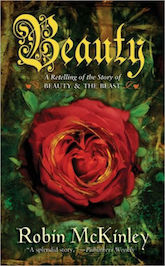 There are two kinds of Robin McKinley fans: Those who prefer Beauty, her debut novel and initial retelling of Beauty and the Beast, and those who prefer Rose Daughter. I have to admire the guts it took to retell the same fairy tale twice, but I am firmly in the Beauty camp: Simpler in its prose stylings than Rose Daughter, Beauty combines the sumptuous imagery of fairy tales with a no-nonsense, down-to-earth protagonist.
There are two kinds of Robin McKinley fans: Those who prefer Beauty, her debut novel and initial retelling of Beauty and the Beast, and those who prefer Rose Daughter. I have to admire the guts it took to retell the same fairy tale twice, but I am firmly in the Beauty camp: Simpler in its prose stylings than Rose Daughter, Beauty combines the sumptuous imagery of fairy tales with a no-nonsense, down-to-earth protagonist.
Beauty is not badass, nor kickass, just very sensible—a wonderful contrast to the fairy tale elements thrust upon her. She is further grounded by her commitment to family—her father and sisters, who love her in turn. Written in the first person, the narrative voice is a joy—warm and full of humor. Somehow a book told from the perspective of a commonsense character ends up pure magic.
“The Bloody Chamber” by Angela Carter
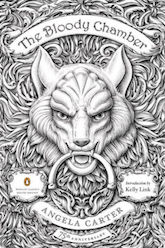 The titular story of a collection, Angela Carter’s “The Bloody Chamber” is justly famous. It is a horror story, which makes sense—like many fairy tales, the tale of Bluebeard, which forms the basis for “The Bloody Chamber,” is horrific. We see cheap versions of Bluebeard on crime procedurals—serial killers who keep the gruesome remnants of women shut away. What makes “The Bloody Chamber” a classic is Carter’s language, which is peerless; and the way she lends psychological dimension to a tale that in most hands would be grist for a slasher.
The titular story of a collection, Angela Carter’s “The Bloody Chamber” is justly famous. It is a horror story, which makes sense—like many fairy tales, the tale of Bluebeard, which forms the basis for “The Bloody Chamber,” is horrific. We see cheap versions of Bluebeard on crime procedurals—serial killers who keep the gruesome remnants of women shut away. What makes “The Bloody Chamber” a classic is Carter’s language, which is peerless; and the way she lends psychological dimension to a tale that in most hands would be grist for a slasher.
Physical details, especially regarding objects of luxury and beauty, are key in fairy tales. Carter conveys with precision every detail of the Marquis’s castle; its furnishings, hoarded treasures, and splendid isolation. With the same attention to detail she conveys the horror of the subterranean chamber that is the Marquis’s secret. That each is joined to the other—dark and light, horror and beauty—is, in part, what the tale is about.
The Outlaws of Sherwood by Robin McKinley
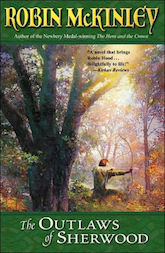 Yes, I’m doing it—I’m mentioning the same author twice. Robin McKinley is a force to be reckoned with in the field of retellings, and not only can I mention her work twice—I could talk about it even more if I had the space. For example, her retelling of “The Twelve Dancing Princesses,” collected in The Door in the Hedge, is beyond gorgeous. But for the sake of this piece, I’ll stick to talking about my favorite of her retellings: The Outlaws of Sherwood.
Yes, I’m doing it—I’m mentioning the same author twice. Robin McKinley is a force to be reckoned with in the field of retellings, and not only can I mention her work twice—I could talk about it even more if I had the space. For example, her retelling of “The Twelve Dancing Princesses,” collected in The Door in the Hedge, is beyond gorgeous. But for the sake of this piece, I’ll stick to talking about my favorite of her retellings: The Outlaws of Sherwood.
On its face, The Outlaws of Sherwood seems like a de-glamorization of the Robin Hood legend. McKinley’s Robin Hood is a gloomy pragmatist whose fate was thrust upon him; who is obsessed, more than anything, with what will “keep the rain out.” He has no time for ideals or mischief. Unlike the legendary figure, he doesn’t spend his days brainstorming how to make a fool of the Sheriff of Nottingham. His goal is survival, for himself and his band.
But he has wit, and is surrounded with people of varying degrees of idealism: chief among them the complex, enigmatic Marian. As the tale progresses and deepens, the legendary aspect of the story begins, piece by piece, to surface. In the end, what Robin McKinley has accomplished so brilliantly is show how a band of real people, raw and human, can with the passage of time be flattened, illumined, into lasting fame.
The Once and Future King by T.H. White
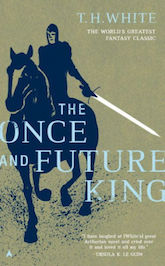 No list of classic retellings would be complete without The Once and Future King, T.H. White’s epic of King Arthur based on Sir Thomas Malory’s Le Morte D’Arthur. So much can be said about this magnificent book—for one thing, how funny it is; how the author revels in anachronisms and asides to the reader; how his passion for the material is burned into every page.
No list of classic retellings would be complete without The Once and Future King, T.H. White’s epic of King Arthur based on Sir Thomas Malory’s Le Morte D’Arthur. So much can be said about this magnificent book—for one thing, how funny it is; how the author revels in anachronisms and asides to the reader; how his passion for the material is burned into every page.
But what I love most about The Once and Future King is T.H. White’s psychological renderings of the characters, and how complex and tortured they can be. And how that inner torment lends itself perfectly to tragedy, which is what this epic is at its core (which you know going in, because it’s based on a book that literally means “The Death of Arthur”). Lancelot, enshrined in Arthurian literature as a handsome hero, here is hideously ugly and filled with self-loathing. His commitment to becoming the greatest knight in the world is born of that self-loathing, an attempt to conquer himself.
Other standout characterizations include Gawaine of Orkney, who is—at least in English versions of the legend—one of the most important of Arthur’s knights. White gives us a dark vision of the Orkney brothers, who are raised with a thirst for vengeance. What makes Gawaine a compelling creation is his complexity: he shares his brothers’ violence and impetuousity, while wishing desperately to be a better man.
Malory’s work is a vibrant, colorful tapestry; White gives it dark, human dimensions.
The King Must Die by Mary Renault
 It’s too on the nose to call Mary Renault a goddess, but The King Must Die is written in such a way as to seem divinely inspired. This rendition of the myth of Theseus is powered by some of the most exquisite writing I’ve ever encountered. From the origins of Theseus in his home village of Troizen, to his intrigues in the royal palace of Athens, and—most of all—to the maze of the minotaur on Crete, Renault immerses the reader fully in a world that feels grander and more real than our own. This is the essence of epic: To make what is past, and strange to us, take on overpowering life.
It’s too on the nose to call Mary Renault a goddess, but The King Must Die is written in such a way as to seem divinely inspired. This rendition of the myth of Theseus is powered by some of the most exquisite writing I’ve ever encountered. From the origins of Theseus in his home village of Troizen, to his intrigues in the royal palace of Athens, and—most of all—to the maze of the minotaur on Crete, Renault immerses the reader fully in a world that feels grander and more real than our own. This is the essence of epic: To make what is past, and strange to us, take on overpowering life.
Renault writes utterly convincingly of the Minoans, about whom we know so little; of bull dances, of the splendor of Minos’s palace, of Theseus’s adventure at the heart of the maze. She took an immortal myth and from it made a book deserving of similar immortality, because it is that good.
Ilana C. Myer has worked as a journalist in Jerusalem and a cultural critic for various publications. As Ilana Teitelbaum she has written book reviews and critical essays for The Globe and Mail, the Los Angeles Review of Books, Salon, and the Huffington Post. Last Song Before Night was her first novel, followed by Fire Dance. She lives in New York. Find her on Twitter @IlanaCT.










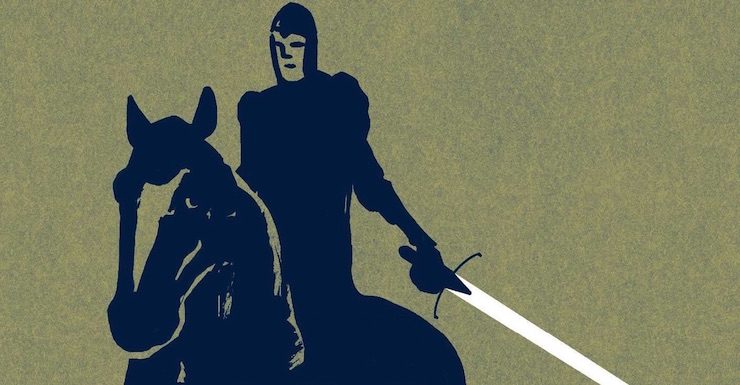
I also preferred Beauty (and it’s also very reminiscent of the Disney film, so I wonder if somebody was familiar with it) although Rose Daughter has some unique aspects to it.
But my favorite retelling might be Juliet Marillier’s Daughter of the Forest, which is a retelling of the seven swans fairy tale.
Personally, I preferred Parke Godwin’s “Sherwood’, Avon, 1991 for Robin Hood. As for Arthur, his Firelord is a good King Arthur series but Bernard Cornwell’s trilogy is the my preferred interpretation.
I admit I’m the third kind of Robin McKinley fan — my favorite is Sunshine.
My favorite retelling is probably Ellen Kushner’s Thomas the Rhymer (from the ballad of the same name), followed closely and in no particular order by Pamela Dean’s Tam Lin and Steven Brust’s The Sun, the Moon and the Stars.
What is the Robin Hood book where it is Marian who is the better archer, and at the end both she and Robin run away together to join the crusades?
Random – that would be Outlaws of Sherwood
Evangeline Walton’s four book retelling of ‘The Mabinogion’ is gorgeous. If you loved Lloyd Alexander’s Prydain books, you’ll love Evangeline’s Mabinogion.
Glad to see the Renault mentioned here. There’s a sequel, The Bull From the Sea, which takes up the story from Theseus’ return from Crete. Just as good, to my mind.
@5 Ah thank you, I read it so long ago I could not remember the name. I shall visit the bookshop this weekend and buy it, thanks.
You could do the whole article based on Robin McKinley’s work. I do love the practical Robin in Outlaws of Sherwood, and how the others help become the legend.
I love everything Robin McKinley (especially Beauty and Sunshine and The Hero and the Crown and…), who, by the way is actually writing again! As of 10 April 2018 http://robinmckinleysblog.com/and-the-four-most-asked-questions-are/ Robin says she is writing again after almost 5 years off, the new novel is tentatively titled ‘One Year Diary’.
I wanted to mention two of my favourite re-writes of the Arthurians, (1) Mary Stewart’s ‘The Crystal Cave’ looks at Merlin before he became Arthur’s man, a coming of age story with more realistic battles and politics than the average Camelot retelling. The people are real and dirty and historically plausible, and in fact, everything seems plausible, even the bits of magic (which in many instances are simply feats of engineering). A fantastic book. And (2) Gillian Bradshaw’s Hawk of May which comes at Arthur’s tale from the viewpoint of one of his knights, Sir Gawain, but as a young boy. Lavish in mythology and really well-written.
I love Robin McKinley, but since she’s been well covered I’ll mention some others.
Shannon Hale’s “The Goose Girl” is one of my favorites. It’s a fascinating retelling of the Grimm tale, and takes very seriously the question – what would it be like to speak to the wind? And more importantly, what would it be like to be a princess whose servants try to kill you and replace you with a usurper on your way to marry a prince you’ve never met? And then Shannon Hale wrote three more books, because the question becomes, What if you can’t STOP hearing the wind? And what if other elements can speak? And also there are ongoing political ramifications from the first book…
“Enchantment” by Orson Scott Card – takes the tale of Sleeping Beauty and adds Baba Yaga and time travel. Notable for being one of only a few books that every member of my family enjoyed. His book “Pastwatch: The Redemption of Christopher Columbus” was another.
Diane Zahler – “A True Princess” is a delightful retelling of The Princess and the Pea, and “The Thirteenth Princess” is a retelling of The Dancing Princesses.
Also a version of the Dancing Princess: “The Girls at the Kingfisher Club” by Genevieve Valentine, which is set in the Roaring Twenties and is absolutely spectacular.
And finally, “Mermaid: A Twist on the Classic Tale” by Carolyn Turgeon. As the title says, it is a different perspective on The Little Mermaid – giving equal time to the mermaid, and to the girl who finds the prince washed up on shore…
The Dracula Tape by Fred Saberhagen – While it follows the events of “Dracula” closely, the shift in narrator provides humor and wry commentary and you ALMOST believe Vlad isn’t the monster he is portrayed as in Stoker’s version.
I looked at the introduction and wondered “Which Robin McKinley will she pick?”– and there are two! I might have put her Twelve Dancing Princesses even ahead of Robin of Sherwood, because it combines a re-telling with a twist, and an oral-history voice.
Pamela Dean’s Tam Lin is another of my favorites.
(And there’s the famous observation that Niven’s Ringworld is a retelling of The Wizard of Oz.)
Will Chimera by John Barth qualify as a re-telling?
Grendel by John Gardner
Rosemary Sutcliff’s Swords At Sunset is, I believe but am happy to be contradicted, the first novel to retell the Arthurian myth as a realistic historical events. A Romano-British cavalry leader narrates his own account of his battle against the Saxons.
Excellent list! Yes, Robin McKinley RULES in this area. @15, I second Gardner’s Grendel. I plugged it recently on the thread about standalone fantasies. @3, two of your three suggestions (Thomas the Rhymer, Tam Lin) would also be on my expanded list of ten. On the all-ages front, I would also add the terrific graphic novel Rapunzel’s Revenge, written by Shannon Hale and Dean Hale and illustrated by (unrelated!) Nathan Hale.
Which of Donna Jo Napoli’s retellings would you all vote for? Zel (Rapunzel), Ugly (Duckling), The Magic Circle (Hansel & Gretel), The Prince in the Pond (frog prince)?
@11, I am off to the library to pick up Zahler’s A True Princess, thanks!
Joanne M Harris’ Gospel of Loki deserves a mention as well. It’s a rather fun interpretation of Norse myth from a very cynical POV.
And pretty much every volume of Terri Windling’s original Fairy Tale set with my favourite being Charles De Lint’s Jack the Giant Killer, though Jane Yolen’s Briar Rose and Pamela Dean’s Tam Lin are also up there.
Put me down as another huge fan of Pamela Dean’s Tam Lin. Nothing finer in this category, in my top 5 fantasy books of all time.
I might as well ask here – does anyone recognize this story? I remember once reading a short story that was a twist on the Twelve Dancing Princesses, and no, it was NOT Robin McKinley’s version. It continued after the end of the story, when the doorway to the other world has been closed – except the princesses open a new one, and their princes come out to get them, and the soldier who discovered their secret decides to go with them to live down there.
My favorite retellings are those of the Arthurian Legends. In addition to the excellent novels already mentioned, a personal favorite is Jack Whyte’s Camulod Chronicles. Excellent story telling
Age of Bronze anyone? Awesome comic art, accurate historical research and the Iliad? Come on!
I always loved Jennifer Roberson’s Lady of the Forest / Lady of Sherwood for Robin Hood retellings, though McKinley’s is also amazing (she’s one of my favorite authors).
Madeline Miller’s Song of Achilles is one of the most amazing books I’ve read ever; I cried at the end. I also remember really enjoying Dennis McKiernan’s Once Upon A Winter’s Night as a teenager, a high fantasy retelling of the ‘East of the Sun, West of the Moon’ fairy tale, and Francesca Lia Block’s short story collection The Rose and the Beast— though I haven’t reread either in a decade, probably.
Another vote for any Mary Renault. I also greatly enjoyed Briar Rose by Jane Yolen. This was part of a sequence of fairy tale retellings from Tor in the 1990s.
I’m rather surprised no one has mentioned the books of Gregory McGuire. Of course, he’s best known for his Wicked series of retellings of The Wonderful Wizard of Oz and some of its sequels, but he’s also retold CInderella (Confessions of an Ugly Stepsister), Snow White and the Seven Dwarves (Mirror, Mirror), Alice in Wonderland (After Alice) and others.
Yes to every Robin McKinley vote!
@11 The Girls at the Kingfisher Club was the first non-traditional version I thought of.
@22 Eric Shanower is amazing and Age of Bronze is a masterwork.
I’ve got to give a shout-out to Michael Crichton’s Eaters of the Dead (Beowulf by way of Ahmad ibn Fadlan’s travel journal). I adore the pseudo-scholarly framing device and the abrupt cut-off ending.
I haven’t read Robin McKinley or Angela Carter, but maybe I should add them to my towering TBR stack.
Mary Renault blew my mind when I read The King Must Die in dark ages of my sophomore year of College. I think most of my education in Greek Mythology to that point had been sanitized. The weird and bloody glossed over or euphemized to meaninglessness. Renault put it center stage.
T.H. White is a favorite. I sought out The Once and Future King after watching and rewatching The Sword and the Stone. Mary Stewart’s Merlin Trilogy may deserve a mention in the retelling of Arthurian legend category. The Hollow Hills, The Crystal Cave and The Last Enchantment.
I’m the type of McKinlry fan who loves her descriptive writing. I’m a huge fan of her books. Would love if y’all did a post on her. (Just saying )
)
Demelza Carlton has a series out of retelling of many fairy tales. Ken Brodsky and Isabella Fontaine have written a series based on Grimm’s Fairy Tales that is really good as well.
No T.Kingfisher!? Love her retellings.
For the Matter of Britain, Jo Walton’s pair The King’s Name / The King’s Peace stand out to me, even if conventional Arthurians are nonplussed by the lead (not the high king, but a ruler as well as a warrior) being female.
Posters have mentioned works from Terry Windling’s series of retold tales. I like the Yolen and Dean works, but I’m especially fond of the first in that series, de Lint’s Jack the Giant Killer, a contemporary urban fantasy (in ~real Toronto — this was before he created Newford) in which the giant-killer is formally Jacqueline; for a bonus, it brings in the little-known Kate Crackernuts (who was novelized by K. M. Briggs, one of the dedicatees of this book), and bits of several other traditional stories.
@ilana C. Myer @OP – I’m impressed you narrowed it down to five. I would have picked a different five books maybe, but I can’t quibble with a single choice you made. I haven’t read a Robin McKinley book in years, more’s the pity. Thanks for the inspiration to try some other titles, too.
@terngirl @10 – I think you are completely correct about Mary Stewart’s Crystal Cave series (The Crystal Cave, The Hollow Hills, and The Last Enchantment). She brilliantly retold the story of Merlin from Geoffrey of Monmouth’s version — which also gave us a new insight into Merlin’s protege King Arthur later on (her later book The Wicked Day). It’s a stark counterpoint to the more “chivalric” version of Malory and White. When I first saw the list, Mary Stewart was the first person who came to mind for me. I honestly thought Crystal Cave would be high on the list.
Many other great suggestions on the comments here!!
Two I didn’t see, but I wanted to pass on were:
1. Christopher Moore’s Fool (which retells the story of King Lear and is less blasphemously scary for people than Mr. Moore’s Lamb: The Gospel According to Biff) and
2. Robert Lee Hall’s long out-of-print Exit Sherlock Holmes (originally published in 1977 but with paperback editions for a decade or so afterwards).
Oh, one more: Stephan Grundy’s Rhinegold, basically a novelization of the Nibelungenlied.
I’m a little surprised not to see any comments about Mercedes Lackey here yet. Her take is usually the “fractured fairy tale” type of retelling, but I’d still consider at least some of the Tales of the Five Hundred Kingdoms and the Elemental Masters series to be retellings. The Snow Queen, Fire Rose (Beauty and the Beast), The Serpent’s Shadow (Snow White), Gates of Sleep (Sleeping Beauty), From a High Tower (Rapunzel), Phoenix and Ashes (Cinderella-ish). Plus there’s Firebird, her lovely take on the classic Slavic tale, and A Tangled Web, a recent work that twists Persephone and Hades from Greek mythology with a couple from Norse mythology.
If you like fairy tale retellings with sensible heroines, you should definitely look up Ursula Vernon’s work. (Her stories for adults are mostly published under the name T. Kingfisher.) I especially love her short stories.
No one has yet mentioned Diane Wynne Jones’ brilliant retelling of Tam Lin / Thomas the Rhymer, in Fire and Hemlock, or Ellen Kushner’s retelling in Thomas the Rhymer, or Naomi Mitchison’s retelling in The Big House.
Gillian Bradshaw retells the Arthurian saga in Down The Long Wind, and so does Naomi Mitchison in To The Chapel Perilous – Mitchison’s version imagines the Matter of Britain as told by two journalists working for different papers.
Gillian Bradshaw retells one of the 12 Lais of Marie de France,”Bisclavret”, in The Wolf Hunt. I love that story.
Rosemary Sutcliff should also get a mention for her retelling of the Arthurian saga in Sword At Sunset: that and Down The Long Wind are my two favourite serious retellings of Arthurian legend. (T. H. White is in a class by himself, and as he would be the first to admit, he was writing Malory fanfic.)
Robin McKinley is fantastic – I also love Spindle’s End (and Deerskin, even though I nearly quit reading forever about a third of the way through, you’ll be able to guess where if you’ve read it yourself).
@36 jcarnall–Both hoopmanjh @3 and I myself @17 plugged Kushner’s Thomas the Rhymer.
@17 I would vote for Breath (Pied Piper) by Napoli.
I will also add my accolades to Robin McKinley. Found her in college in my adolescent lit class and never looked back. I own it all in paper and ebook. She even answered my fan mail back in the late 80’s. I still have the letter.
I’d like to nominate Steven Pressfield’s THE LAST AMAZON–if tragedy combines pity, horror and glory, this book certainly qualifies. It contrasts the last days of a civilization about to be absorbed by a larger and more complex one, and makes you sorrow for them both (I like it much better than either his Alexander book, or his retelling of Thermopylae
I’ll jump on the Robin McKinley appreciation bandwagon (she’s a goddess!) and offer up Spindle’s End, a retelling of Sleeping Beauty, which I find quite as wonderful as Beauty — as much for its unconventional heroine as for the beauty of its prose and the sheer wonder of its magic. I also enjoy Rose Daughter; McKinley’s two retellings of Beauty and the Beast differ in tone and approach, but both are lovely.
Mary Stewart’s books are probably my favorite Arthurian retellings… but there are homages to the Arthurian matter in Susan Cooper’s wonderful Dark is Rising series for middle-grade readers, particularly The Grey King (a Newberry winner) and Silver on the Tree.
Juliet Marillier’s Wildwood Dancing is a simply gorgeous mashup of The Twelve Dancing Princesses, the Frog Prince, and the Night People (vampire) legends of Transylvania. Jessica Day George’s Princess of the Midnight Ball is a straightforward but well-written early-YA retelling of the Twelve Dancing Princesses.
Like one of the readers above, I quite enjoyed Once Upon a Winter’s Night, Dennis McKiernan’s retelling of East of the Sun, West of the Moon (with much added material.) Edith Patou’s East takes on the same fairytale in a middle-grade/early YA novel, and does it beautifully. Incidentally, McKiernan continued the series and his romp through fairytales with four more books, but none of them quite live up to the first in my mind.
Mercedes Lackey writes two series based on fairy tales. The Tales of the Five Hundred Kingdoms are lighter and more fractured than the Elemental Masters books. In both cases, the early books are generally better than the later ones. I wouldn’t rank Lackey on the same level with McKinley or Marillier; Lackey tells a pretty good story, but her prose is more serviceable than breathtaking. Still, the books are interesting and, in the case of the Five Hundred Kingdoms series, often funny.
And if you’re looking for a different take on familiar tales, try Marissa Meyer’s Lunar Chronicles, loose retellings of Cinderella, Red Riding Hood, Rapunzel, and Snow White (with elements of a few other tales, including Star Wars) in a science-fiction setting. They’re fast-paced YA and a lot of fun.